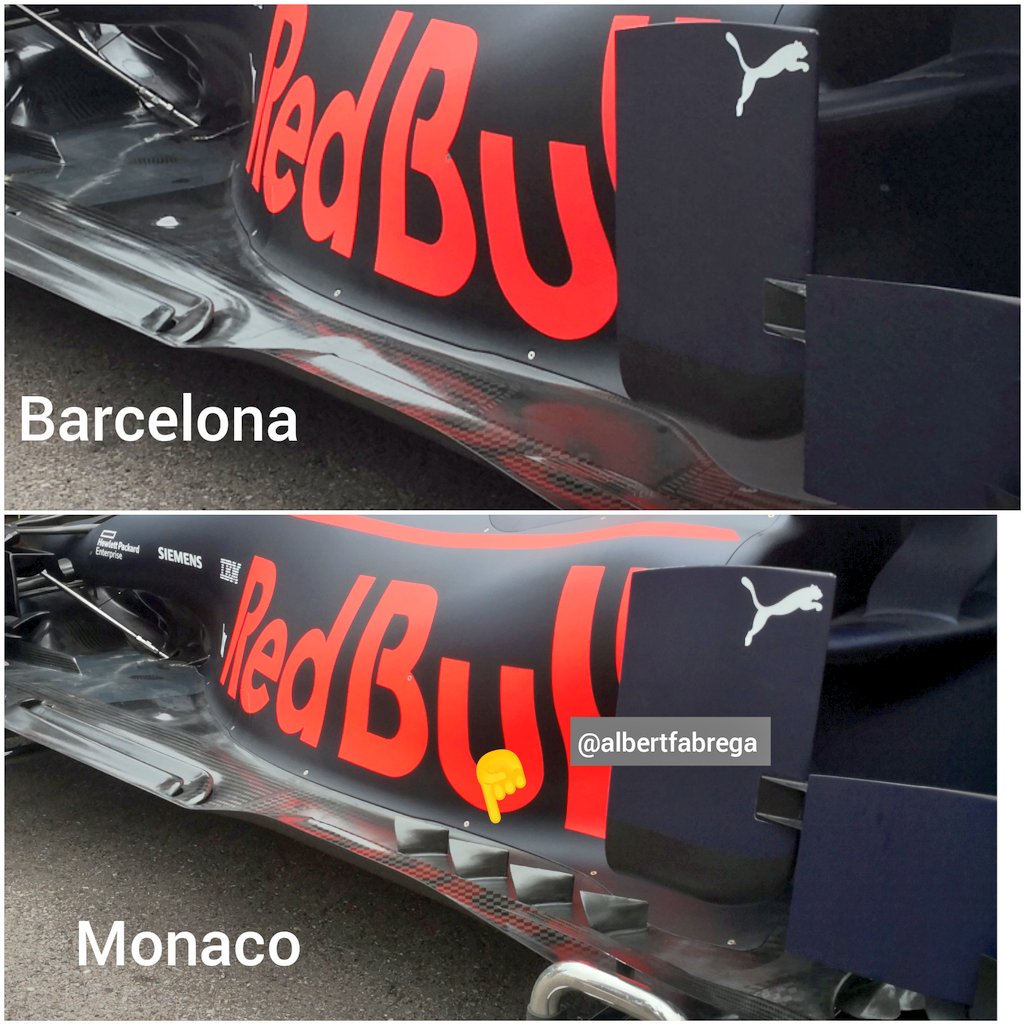
Seems like RB is focusing on trying to seal the leading flanks of the floor.





The region immediately adjacent to y = 250mm from the car centreline plays a vital role in the production of the Y250 vortex.
Right, commonly the flaps are used to create that vortex, I'm speaking about using the main plane to start the tunnel the way Ferrari and Mercedes have so prominently done. Other teams do it as well however Mercedes and Ferrari have the most aggressive tunnel in the y250 area.
I also noticed Red Bull do have some "tunnel" action going and the inner flaps look like they're trying to split the flow in 2 vortecies.Just_a_fan wrote: ↑13 Jun 2019, 00:59The forward bit of the "tunnel" is an effect of the increased camber at this point. More camber means more downforce (others things being equal blah, blah). By having a region of increased camber here they'll also benefit from starting to draw air from under the central section earlier. This means more downforce from the central section as well as a stronger Y250 vortex.
RedBull have a prominent step at the junction of the centre and wing sections on both the upper and lower surfaces where the others tend to blend the upper surfaces as a single surface. I wonder why they do that.

Could equally indicate they have paired the car with alot more rear downforce.roon wrote: ↑14 Jun 2019, 22:01Merc & RB front wing size may suggest their center of pressure is further forward than that of Ferrari or Torro Rosso. If not purely driven by criterion of drag and downforce, could this be about driveability and driver preferences?
Do Hamilton and Verstappen prefer oversteer? Does Vettel prefer understeer? Accordingly.
Are you sure?
Most of what I've read suggests at high speed understeer is preferable, but at low speed it's more driver preference. Understeer may allow power to be applied sooner, but oversteer gets the car turned sooner as well.